
views
X
Trustworthy Source
American Kennel Club
The American Kennel Club (AKC) is a purebred dog pedigree registry in the United States. The AKC advocates for the responsible ownership of dogs and promotes purebred dog events, such as the Westminster Dog Show.
Go to source
Doing Foundational Training
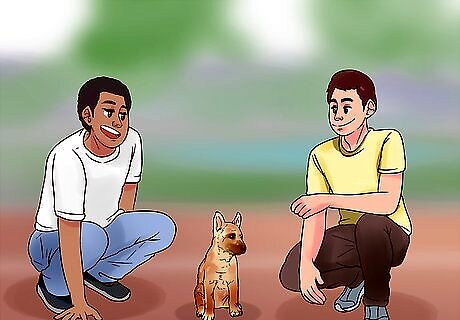
Socialize your dog at a young age. Between the ages of 4 to 14 (or possibly up to 18) weeks old a puppy goes through a period of socialization. You should expose your puppy to a wide variety of places and people during this period, so that it knows that new places and people are a normal part of life. Walk or carry your puppy in public places, such as busy shopping streets and marketplaces, so it gets used to being around people. With this type of early exposure, it is less likely to feel threatened when it sees someone it doesn't know. Bring a wide variety of people to your home. Having strangers in your home will teach the dog that it is normal for new people to show up and they shouldn't feel threatened by this occurring in the future.
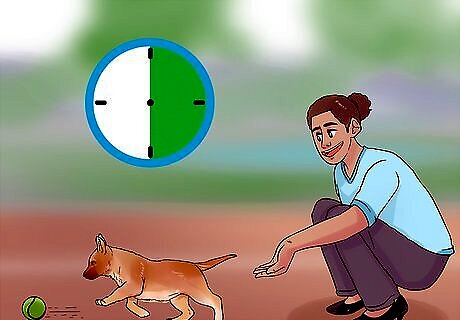
Spend quality time with your dog. Play is essential in a dog's life and it can be very helpful in building a relationship with your dog. Malinois in particular are affectionate dogs that love spending time with their people. Thus, from a young age you should spend quality time with your dog every day. At least 30 minutes of play each day is a good amount for a small puppy, while an older dog can use more time to play and exercise with you. For example, you could give your Malinois a small rubber ball to play with. Throw the ball to the puppy and then practice fetching it.
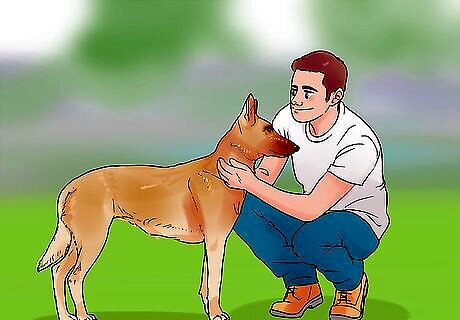
Be gentle with your dog. When creating a good foundation for training, you should make sure not to get angry or to be violent with the dog. Malinois do not generally respond to aggressive training techniques. Instead, avoid treating your puppy harshly while its still young so that it will trust you and will be enthusiastic about doing what you ask it to do. Manage your expectations for the dog's behavior and focus on creating a bond based in affection instead of fear. While it is important to stop negative behaviors, such as going to the bathroom in the house, redirection and showing the dog what it should do instead is much more effective than yelling or hitting the dog. Remember, when you are yelling at a dog it likely has no idea why you are yelling at it.
Teaching Your Malinois Commands

Start training a puppy at 8 weeks old. A young puppy is perfectly capable of learning how to follow your commands and beginning early will help them avoid learning bad habits. Tell the dog to "sit," "stay," and "come" when you want it to do those things. While you shouldn't expect perfect behavior at such a young age, beginning to use verbal commands with the dog will set the foundation for obedience as it ages. For a Malinois, starting training this early can be key to helping it develop a pleasing and pleasant personality. For example, you should begin house training your puppy as soon as possible. Take it out on a regular schedule and take it to the same spot every time, so that it learns to go to the bathroom only outside.
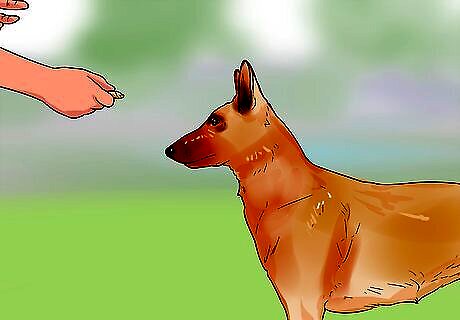
Use reward-based training techniques. Instead of punishing a dog for doing the wrong thing, give it praise and treats for doing positive things. When it sits, goes to the bathroom outside, or comes when called, give it a pat, tell it how smart it is in a nice voice, or give it a small treat right away. By starting this positive reinforcement early, the dog will strive to do things that please you in the future. This positive reinforcement can start very early and using it when the dog is young will help you with more advanced training later.
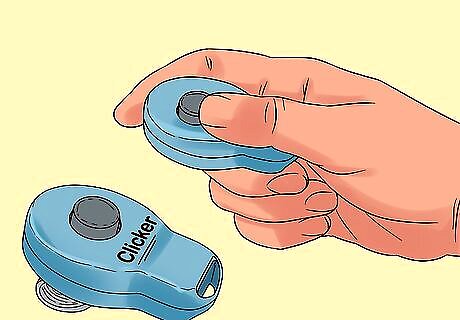
Consider using clicker training. Clicker training is a reward-based training style that incorporates a distinctive clicking noise as well. This noise is done when the dog does what you have asked it to do, which helps the dog understand when it has completed what it was asked to do. Clicker training is a helpful training method because it eliminates some of the confusion that can occur between trainer and dog. When the clicker is clicked right when the dog does what you asked it to do, there is no ambiguity about your commands. This can be very helpful when giving a dog extensive and skilled training, which is common with Malinois.
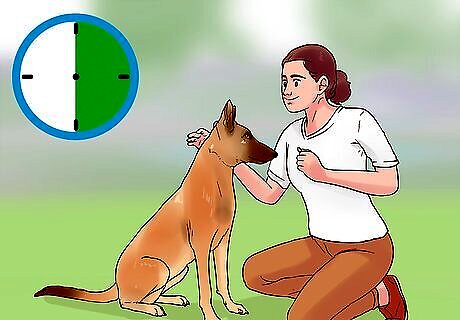
Adjust the length of training sessions as the dog ages. When your Malinois is a young puppy, training sessions should be at most 10 minutes long. As the dog grows up, you can gradually extend each training session to 30 minutes to 1 hour. Malinois love learning, being active, and spending time with their owner, so most of them are happy to do several training sessions a day.
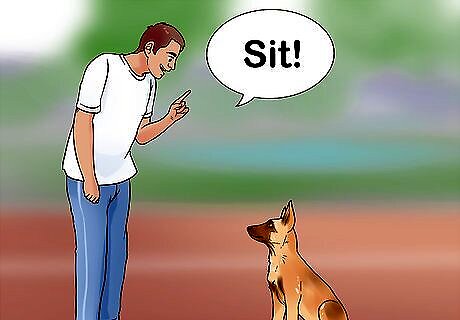
Teach the dog to sit. When you want to make the puppy sit, you need to wait for a moment when the dog is about to naturally sit, then say "sit," and give the dog praise and a treat. If you do this repeatedly, the dog will begin to associate the action with the positive reinforcement. Try practicing sitting when you are out on walks. When you pause at a corner, be prepared to give treats or praise, as the dog will likely naturally sit when it comes to a stop. The time it takes for the dog to learn to sit can vary drastically. It can take a lot of repetitions for your dog to understand your command and why it is getting treats.

Introduce additional commands once the dog has mastered sitting. Sit is the starting point for a variety of other commands, such as stay and lay down. For instance, once the dog is sitting say the word "down" and signal that the dog should lay down. You may need to wait until the dog wants to lay down and give it a treat then, just as you did when teaching the dog to sit. Keep in mind the positive reinforcement technique by saying "Good dog" when it does the right thing. Keep repeating this routine daily until your dog follows your commands reliably.
Discouraging Bad Behavior
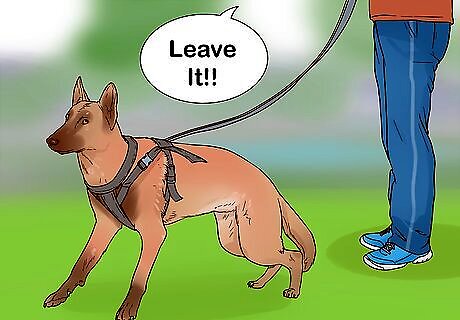
Control your dog's prey drive. To minimize the dog's instinct to attack prey, socialization should be the first but not the only solution. Use the dog's training to instruct it to heel when walking outside. You can also teach a Malinois to "leave it," meaning to leave something alone. Teaching this command with reward-based training can keep your dog's prey drive in check. All Malinois have high prey drives, meaning they typically chase small animals like cats, small dogs, and potentially little children. So you need to watch out for this instinct and nip it in the bud. Also, when walking your Malinois make sure the leash is held tight, so that the dog doesn't get loose if it lurches at something. Prepare for a new Malinois puppy. "In a few weeks, my family will welcome a Belgian Malinois puppy. The tips here on socialization, playtime, and reward-based training gave me the perfect starting point. Now, I feel ready to raise a happy, well-behaved Malinois. This guide provided everything I needed to know to prepare for our new fur baby." - Joseph O. Understand your dog's behavior. "I never knew why my Malinois Maddy followed me everywhere. This article explained it's natural herding behavior for the breed. It also taught me these dogs need constant stimulation. Now I make sure to spend more quality time with Maddy and give her activities to stop unwanted behavior. The insight here helped me understand my unique dog." - Joe G. Know what to do. "My wife just surprised me with a new Malinois puppy. With 3 rescues already, I was worried about training it. But the instructions here on commands, discouraging bad habits, and setting boundaries gave me confidence. Even experienced owners like me can benefit from the expertise in this guide. Now I feel equipped to train our energetic new addition." - David T. Communicate clearly with balanced training. "I appreciated the emphasis on clear, consistent communication when training a Malinois. The tips on rewards and corrections will help me reinforce good habits and extinguish bad ones. This balanced approach will help me bond with my intelligent dog. I'm grateful for this expert guidance tailored to the Belgian Malinois." - Mignonne S. Did you know that wikiHow has collected over 365,000 reader stories since it started in 2005? We’d love to hear from you! Share your story here.

Reduce herding behavior. When a Malinois begins to herd you or other people, you should stop the behavior right away, as it can escalate to nipping quickly. The first line of defense is to give them something to do instead of herding, such as playing with a toy or going for a walk. However, you can also work on the command "stay," which should stop them in their tracks. The Malinois is a herding type of dog, so try not to get annoyed if yours tends to follow you all around the house as you move. Herding behavior can become especially problematic if your dog begins herding children or elderly people, who may not be stable enough to resist the dog's physical attention.
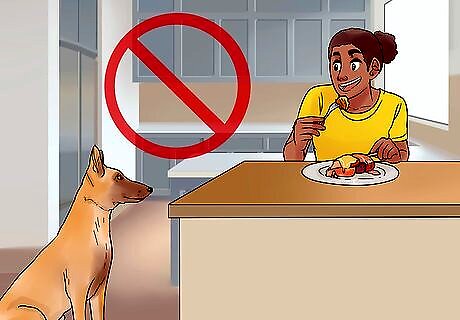
Reduce begging for food. Make it clear that your meal time is separate from the dog's meal time. As this dog is a work in progress, you need to teach your Belgian Malinois that it is not proper for it to stand in front you while you're eating your meal. Instead, have it in the down position near the doorway while you and your family are having your meals.



















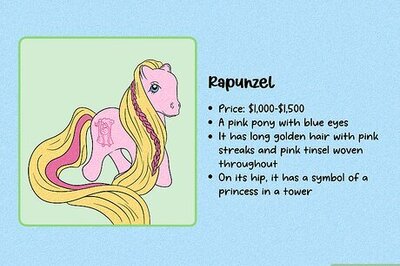
Comments
0 comment